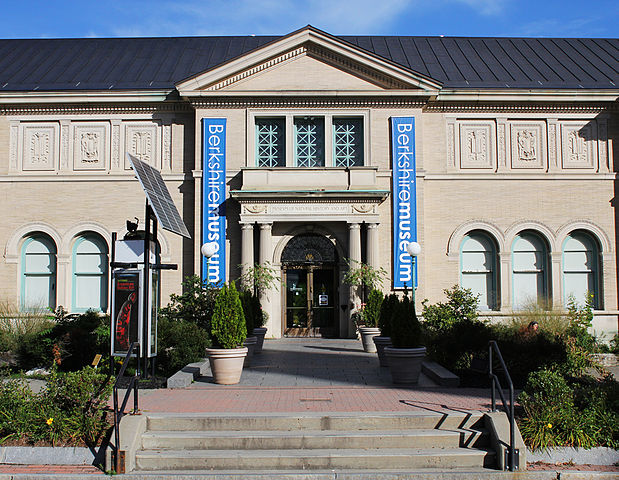In response to the coronavirus pandemic, on April 15, 2020, the Association of Art Museum Directors (AAMD)––which issues guidance and recommends best practices to its members[1]––announced changes to longstanding rules governing museums’ use of restricted funds, including funds resulting from donations carrying tax exemptions.[2] To give museums flexibility to withstand the financial distress caused by closures and continuing uncertainty, the changes temporarily ease prior limitations that proceeds received from deaccessioning objects in a museum’s collection could only be used for new acquisitions and that restricted funds could not be used for general operating expenses.[3]
Deaccessioning items in a museum’s collection has long been a sensitive and even controversial subject since it gives current trustees the ability to undo decades of work by drastically changing the character of a museum and also because the process is subject to abuse if a museum, unable to balance its budget, resorts to dismantling its collection to cover day-to-day shortfalls.[4] Existing AAMD guidelines providing that proceeds of deaccessioning can only be used for acquisitions are intended to assist art museums in navigating these treacherous waters. Similarly, donated funds that have generated a tax deduction to the donor are imbued with a public trust and museum boards are charged with the responsibility to use them in the public interest.
AAMD made two substantive, although temporary, changes to its guidelines by placing a moratorium on enforcement through April 10, 2022:
- Going forward, AAMD will “refrain from censuring or sanctioning any museum––or censuring, suspending or expelling any museum director––that decides to use restricted endowment funds, trusts, or donations for general operating expenses.” An important caveat is that AAMD lacks the authority to police particular uses of funds; museums are still bound by their own policies, rules and applicable law.
- The second temporary change—and the one garnering the most attention—allows museums to use proceeds from the sale of deaccessioned works to support direct care of collections; previously, AAMD permitted museums to use such funds only to purchase additional objects. According to AAMD’s second temporarily revised guideline, a museum may use funds for direct care of collections only if the board approves a publicly available policy describing what constitutes direct care. Since long before the current pandemic, stakeholders have been debating this change–which seeks to balance museums’ retention of their entire collections with the need to properly care for and maintain those collections.[5] This temporary change more closely aligns that provision with the standards of the American Alliance of Museums (AAM), which has far more member museums than AAMD and provides an important accreditation function. The AAM Code of Ethics has long allowed museums to use proceeds from the sale of collections to be used for acquisition or direct care of collections.[6] Museums following AAMD guidance now join AAM museums in facing the dilemma of how to define “direct care,” as the definition must be broad enough to allow support for the collections, but sufficiently narrow not to allow proceeds from the sale of deaccessioned works to be used for general operating expenses. It will be interesting to see whether AAMD members, who bear much of the brunt of Holocaust-related looted art claims, will use funds generated from sales to finance increased provenance research on their collections.
Whether AAMD’s relaxations on the use of restricted funds will remain in place in the long-term remains to be seen. Even in the immediate future, it is unclear how many museums will take advantage of the temporary guidelines, given that board action to adopt new deaccession policies consistent with these guidelines can be expected to be slow. The changes have already been described as “chinks in a fortress,” drawing the observation that “it will be extremely hard for the AAMD–or anyone else–to pass judgment on a museum’s decision in the face of any existential threat.”[7] One thing is certain: unless museum finances quickly return to pre-COVID levels, museums will have to continue to rethink strategies and planning for the new normal.
Olga Symeonoglou is an attorney in the DC office of Cultural Heritage Partners.
Photo by Berkshire Museum via Wikimedia Commons.
[1] Although the AAMD sets guidelines for only about 250 art museums, it has outsized influence due to its stature and the absence of prompt guidance from other museum associations.
[2] https://aamd.org/for-the-media/press-release/aamd-board-of-trustees-approves-resolution-to-provide-additional
[3] AAMD recently sanctioned the Berkshire Museum and the LaSalle University Art Museum for misuse of funds from deaccessioning parts of their collections. https://aamd.org/for-the-media/press-release/aamd-statement-on-sanction-of-berkshire-museum-and-la-salle-university
[4] https://aamd.org/for-the-media/press-release/aamd-statement-on-sanction-of-berkshire-museum-and-la-salle-university
[5] E.g., Robin Pogrebin, Clean House to Survive? Museums Confront Their Crowded Basements (N.Y. Times Mar. 12, 2019), https://nyti.ms/2SPugA9
[6] https://www.aam-us.org/programs/ethics-standards-and-professional-practices/code-of-ethics-for-museums/
[7] Mark S. Gold and Stefani S. Jandle, Why the Association of Art Museum Director’s move on deaccessioning matters so much (The Art Newspaper, May 18, 2020), available at https://www.theartnewspaper.com/comment/why-the-aamd-s-move-on-deaccessioning-matters-so-much.
